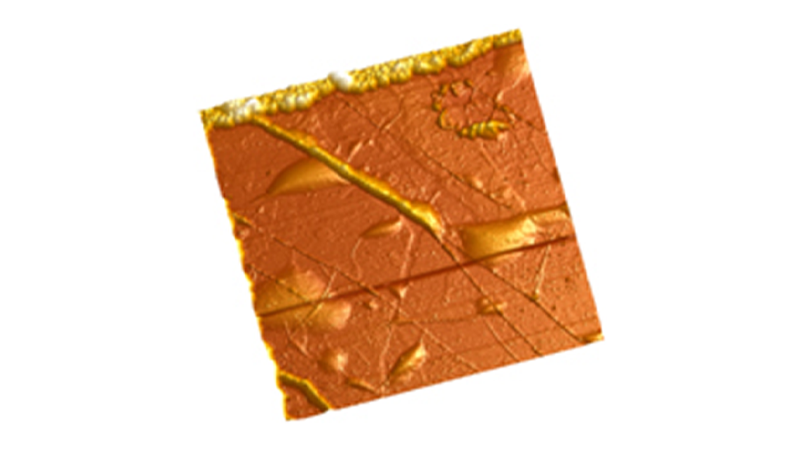In Operando Structural Evolution of Metal (Oxy) hydroxides Nanosheet for Solar Hydrogen Production
ACS Appl. Mater. Interfaces, 2018, ASAP
Metal (oxy) hydroxide-based (MOxHy, M = Fe, Co, Ni) composites are very important materials in energy conversion and storage systems. For instance, in alkaline media, MOxHy are the fastest known catalyst for oxygen evolution reaction (OER), a key step in solar hydrogen production. It is well-known that both the initial conditioning and the metal impurities in the surrounding electrolytes have critical impacts on catalyst performance. Previously, the authors have reported the visualization of in operando dynamic structural evolution of NiOxHy from nanosheet to nanoparticle assembly during OER using in situ EC-AFM techniques.
This authors extend to dynamic restructuring of other compositions, including Co and Fe, where the Ni1−δCoδOxHy nanosheet is the main focus of this work. From the analysis of the in operando EC-AFM results, they find that the two primary restructuring mechanisms are formation of mechanical stress leading to cracking, and the growth of 3D nanoparticulate structures presumably driven by a ripening phenomenon associated with migration of metal (oxy)-hydroxide species. Interestingly, Co-rich nanosheets are substantially more stable due to the stronger Co-O bonds and nanoscale porosity for structural stability. Authors shed light on how to design practical electrode systems for energy conversion storage devices.

